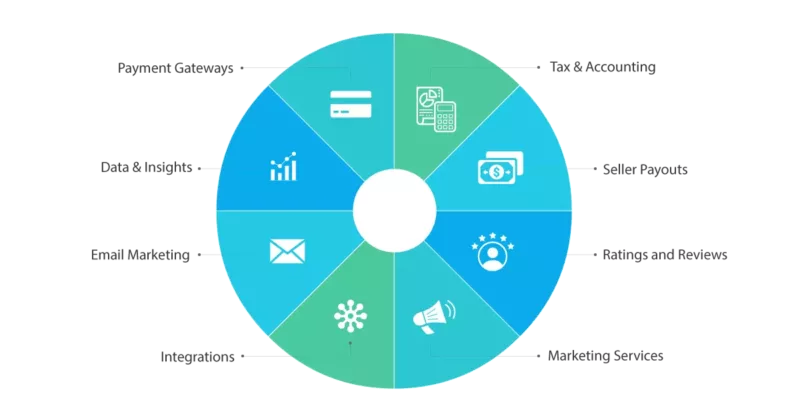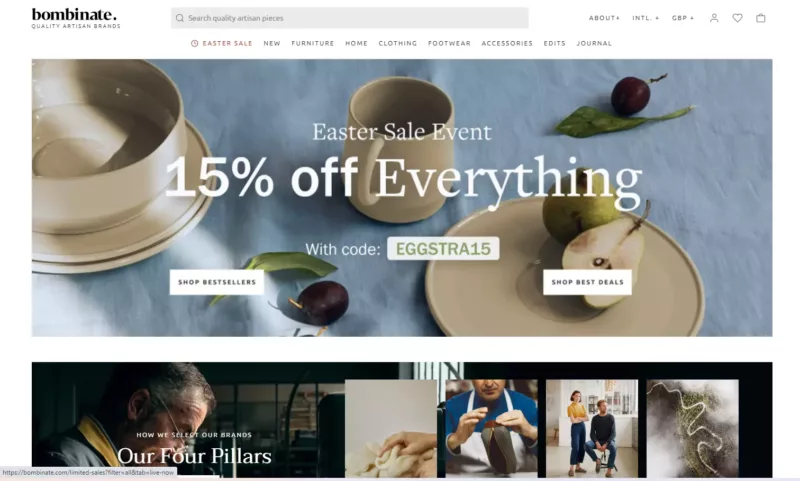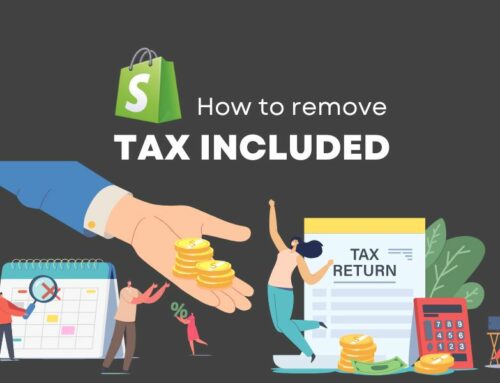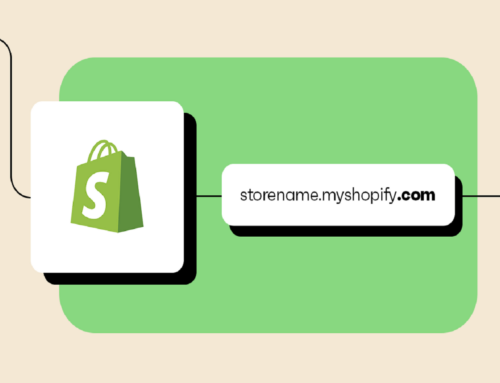Do you want to begin selling on online marketplaces? Shopify Plus marketplace capabilities are designed to assist you in this approach – as long as you select the appropriate tools or tech partner.
Due to different market shifts and several high-profile success stories, the number of online marketplaces has expanded significantly in recent years. We’ve consulted a lot of marketplaces over the years, and while they’re a terrific business model when done correctly, they’re a highly complex area of eCommerce.
Even if the time appears correct and you have enough advanced technology, developing a vibrant marketplace is no easy undertaking. As a result, this post will be beneficial to find out if Shopify Plus is a good choice for marketplace sales and potentially launching a new store.
Let’s dig deeper into this topic!
Contents
Overview Of Shopify Plus Marketplace
You know there are no shortcuts to launching and growing an online marketplace. Having a dependable strategy and knowing best practices is essential, but it is not enough to get the job done. You should know that developing and growing your brand will require significant effort.
A healthy marketplace necessitates a significant amount of effort. Creating an idea and building a Shopify Plus store is just the first step.
Essential Elements Involved In Running A Shopify Plus Marketplace
Choosing the right eCommerce platform can also be time-consuming and require much study before settling on one. So, if you go with a prominent player like the Shopify Plus marketplace, you should know what you’re getting.
The following are the critical components of running a multi-vendor online marketplace.

- Data & Insights: Provides essential data and conclusions to help you make informed decisions on your specific platform.
- Seller Payouts: This feature allows you to pay the sellers’ dues securely and correctly automatically.
- Payment Gateway: Many payment gateways make it easier for buyers to complete transactions.
- Email Marketing: It is essential if you want your online marketplace to expand and attract new customers.
- Integrations & Add-ons: The platform should allow you to integrate relevant ERP/CRM systems to run your marketplace more efficiently.
- Marketing Services: In addition to email marketing, other marketing components should be considered to construct focused and strategic marketing campaigns that reach out to more buyers.
- Tax Regulations: Different vendors on your marketplace would have negotiated different taxes and commissions to use your platform. Besides, you’ll need a good tax engine to manage various partners on your site.
- Accounting: Accounting software should optimize financial activities to keep track of your company’s accounts.
- Finally, it would help if you considered Ratings and Reviews: Another essential feature for establishing a thriving marketplace. Ratings and reviews can assist consumers in developing a sense of transparency in the market.
Is Shopify Plus Marketplace A Good Choice For Sales?
Now that you understand the foundation of a booming marketplace, the question is whether Shopify or Shopify Plus can deliver on it. Of course, the answer is yes. You can quickly sell things on marketplaces with an eCommerce site built with Shopify or Shopify Plus. To do so, go to the App Store (Shopify App Store), select the marketplace you want as long as you already link it with Shopify, and install the application right onto your platform – just like you would with a WordPress plugin.
Further Reading: Shopify vs. Shopify Plus – 5 Key Differences You Must Know
Assume you want to start a business on Amazon. You can easily configure and export your product catalogs from Shopify Plus to the marketplace by adding the Amazon application (“Amazon Channel”) to your online shop.
Shopify Plus is ideal for selling on marketplaces. The well-known e-commerce platform has many features specifically meant to make vendors’ lives more accessible in terms of marketplace presence. However, you also need an external tool in addition to these features.
Adding features to your store necessitates the use of plugins. In fact, Plus is speedier and built to handle significant volumes of transactions rapidly, but it still requires plugins to run a multi-vendor marketplace. Fortunately, apps are available in the Shopify app store to address these demands.
Find out Shopify Plus Updates: Is Shopify Plus Worth Your Money
Shopify Plus Marketplace’s Risks & Considerations

The Shopify Plus marketplace features will allow you to manage a large portion of your professional account directly on the marketplace. Specifically, you can add a trademark, establish a new product, and associate your items with those on the market.
Furthermore, Shopify Plus contains tools specifically developed for large groups – that fit perfectly with high sales volumes on marketplaces: managing 10,000 payments per minute, linking your existing advertising campaigns via APIs, etc.
Nevertheless, it would be best if you considered certain marketplace specifics below.
Limitations in Shopify Plus API
Shopify, in general, or Shopify Plus, is an easy-to-use eCommerce platform even for beginners. Therefore, it has a limit on the API rate. Most of the config work will need to be done outside by custom code or adding third-party applications, and so on.
For example, seller, product, and order management would occur outside the platform.
Thus, the Shopify Plus API rate restrictions are a big concern before going into greater depth about requirements. As your store scales, this API rate for product and order data traveling in and out of Shopify will eventually reach a hard-blocker in the four requests/the second restriction. It would help if you considered queuing and thoughtful architecture from the start.
Antipatterns
Several requirements are technically feasible, but they complicate things for Admins, such as multiple dependencies and script use, and may jeopardize the shopping experience. While these criteria may have simple solutions, combining them could soon result in unstructured code and legacy data flooding the store.
A poor architectural design is a bunch of code piled up with information that becomes confusing and complex. Spaghetti codes are hard to read and almost impossible to understand how it works.

Tax Difficulties
Shopify Plus marketplace does not offer flexible tax rules. The default feature allows you to include/ exclude the tax Checkout’s total cost per product. Still, otherwise, tax logic (rules per area and presenting breakdown at Checkout) is generally applicable. As a result, we suggest using a third-party app to handle taxes more dynamically, but this could be costly. Besides, any tax workarounds will almost have an impact on reporting.
Complicated Shipping & Returns Process
Shopify Plus marketplace does not naturally provide enough shipping flexibility to meet marketplace needs. Sellers might choose which predefined shipping rules should apply to each product, but allowing Sellers to develop their own shipping rules in the store would add significant complexity.
It would include mechanisms for identifying and eliminating associated shipping restrictions when removing Sellers and potential conflicts when several marketplace products are on a single order. Messaging and clarity to customers throughout the purchasing journey may suffer as well. However, if necessary, you can leverage some apps to provide additional dynamic possibilities.
Read More: Top 13 Best Shopify Shipping Apps

On the other hand, returns are another possible risk related to Shopify Plus Marketplace. Again, there is a third-party returns gateway, which could handle Marketplace products like any other product in its most basic form. Still, an Admin would manually reconcile anything with Sellers following a return.
Adding a validation layer per seller and communications to Admin and Customer, with automated reconciliation into multiple accounts, would be a significant piece of development work, adding considerable complexity.
Messaging and Notifications
Shopify Plus Marketplace currently does not provide messaging and notification functionality between Admins and Merchants. If there is this function, it is possible to fundamentally change the entire shape of a project.
For example, a built-in integration so that Sellers process their products and orders with no notification up to this level will make the sales process more seamless. However, the platform lacks the technology to trigger messages sent in some of the required locations.
This upgrade will require much development work to develop messaging styles across platforms, especially when Customer-to-Seller messaging is included. Something simpler, like email flow or Slack notification integration, would be the way to go.
In general, if you choose Shopify Plus, you can launch your activity on marketplaces. However, a flow management solution must be incorporated into the platform’s native functionalities for your sales plan to succeed. Here are some alternative approaches to marketplace sales.
Top Shopify Plus Marketplace Alternatives
Completely Manual Approach

The first approach to altering the Shopify Plus marketplace would be to develop a simplified system in which the admin team would absorb the effort.
Sellers would supply their product details through CSV, which Admin would input and merchandise on the Shopify site. You should provide any ongoing updates separately or through some agreed-upon mechanism. The product would function similarly to any other product in the shop; all commercial components would be handled manually and independently.
In addition, if sellers request product recommendations or upsell, you can include them in this manner. Still, the general goal would be for Sellers to follow the store setup for things like shipping, Tax, Promotions, etc. This is the quickest and easiest way to start selling other brand products on-site, and they can be searched entirely, filtered, and merchandised. Still, it sacrifices a significant portion of the needs aside from that fundamental capability.
Pros:
- You are entirely in control of your store.
- It takes little time and effort to demonstrate the concept.
- Can begin with the perfect Shopify setting and build product and order management for Sellers.
Cons:
- The shop administrator does all of the work; sellers only give data.
- You need coding knowledge.
- MVP with the least amount of flexibility for all parties.
- Scaling becomes more difficult as more sellers, channels, or on-site complexity are implemented.
Native Shopify Apps
In this approach, you take advantage of a few native apps that provide full marketplace capabilities. Multi-Vendor Marketplace is potentially the most comprehensive choice, but Marketplace In A Box and Jetti are also worth considering.
Pros:
- Short lead time to start selling marketplace products on-site
- Some form of product management for Sellers, minimizing admin effort on shop admin vs. the manual approach. Retailers may track orders, apply to sell, and view order commissions.
Cons:
- It is restricted and unyielding. The frontend appearance and interaction with Sellers are limited to the formation and configuration. It is not a high-end experience for Sellers to log in and use.
- Risk in terms of dependability and scalability; these apps have good evaluations but have not been utilized widely in stores. Thus it is unknown how dependable they would be.
- Again, there are international restrictions, and you would want different app instances for each store.
Hiring 3rd Party Tech
The advent of various third-party technology partners to best accomplish individual activities would be the inevitable evolution of a purely manual arrangement. A significant one would be BSS Commerce Shopify to help you with API connections to a Shopify Plus marketplace store with the Shopify Plus web development service. As part of the service, they will help you examine architecture and infrastructure.

Sellers would be able to create, update, and delete products through the platform. Sellers can also add to or alter stock levels in this section.
Besides, it is possible to employ a connector to connect to a Seller’s ERP system and automatically update stock levels from their master. Furthermore, BSS Commerce could handle all of the above while allowing Sellers to take order management and validate return requests.
Pros:
- Meet all technical criteria for a Shopify integration, including Seller communications and notifications.
- You can design and implement interfaces in any way that best serves sellers.
- There may be suitable connections for connecting straight to the seller’s ERP for automated stock updates with minimal effort.
- These solutions are scalable and dependable for other major brands.
- There are no considerable maintenance or hosting concerns or overhead.
Cons:
- This path would require a substantially more significant financial investment (both upfront and ongoing).

Top Brands Using Shopify Plus Marketplace
Airbnb

Airbnb, founded in 2007, is a vertical marketplace linking customers looking for lodging with those looking to rent out their homes in that area. It has subsequently extended to provide experiences where tour guides can share their hobbies and passions with guests. Airbnb has 5.6 million listings in over 220 countries and regions worldwide.
Upwork

Another famous company using Shopify Plus marketplace for building and developing their business is Upwork. This one-of-a-kind platform enables freelancers to do business with interested collaborators. Clients can advertise a wide range of projects on Upwork, from graphic design to banking. Freelancers can pitch and get hired on job boards.
With over 53 million freelancers in the United States, Upwork supports the new work-from-home movement and assists businesses in hiring reputable freelancers.
Bombinate

Bombinate is a UK-based company that offers a diverse range of sustainable and high-quality products. They use Jetti.io to accomplish this effectively.
Rover

Rover is your marketplace for pet products and services. This dog and cat-friendly website connect folks in need of pet care with hosts in their area. It’s “loving pet care in your community.”
In addition, Rover is worth more than $300 million in venture capital funding, offering everything from dog walking to cat boarding.
In Summary
We hope you understand better what it takes to manage a booming Shopify Plus marketplace. All you have to do is be wise, thoughtful, and resourceful.
However, remember that selling on marketplaces through Shopify Plus does not excuse you from adhering to the particular restrictions of each site. For example, Amazon needs you to open a professional account (at an additional cost) and pay a commission on each order placed. Furthermore, Amazon currently only works with Shopify if stores do transactions in US or Canadian currency.
Simply put, before using Shopify Plus to sell on marketplaces, ensure you meet the eligibility requirements. So, if your marketplace ideas don’t pan out as expected, keep an open mind. There are various alternative approaches. The most adaptable and dependable alternative is hiring 3rd party tech.
This option would go with commitment and performance well worth your money. Don’t forget that BSS Commerce is a perfect choice if you are looking for a professional technical team for Shopify Plus development service at an affordable price.




